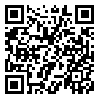Volume 6, Issue 22 (2018)
CFL 2018, 6(22): 92-106 |
Back to browse issues page
Uoniversity of Kurdestan
Abstract: (8893 Views)
Abstract New linguistic theories, considering language as virtual and its rhetorical features as intrinsic, and denying the belonging of these matters to literary language opened up a new chapter in rhetorical research. This research attempts to study a kind of simile in Persian language which has never been examined before. The research method is descriptive-analytic. The data is selected from Proverbs and Wisdoms by Dehkhoda based on desk study using perfect induction and is analyzed on the basis of common rhetorical methods. The reason for choosing this source is the frequency of similes in the work compared with similar works in this field. The results demonstrate that the rhetorical indications in this simile, suspending the min meaning, induce another meaning, because this kind of profound metaphorical superstructural simile has an ironic structure; in other words, unlike all known similes, in this simile, the similarity is a necessary in the service of necessity and expression of its ironic meaning.
Article Type: Research Paper |
Subject:
Popular literature
Received: 2017/12/23 | Accepted: 2019/04/27 | Published: 2019/04/27
Received: 2017/12/23 | Accepted: 2019/04/27 | Published: 2019/04/27
| Rights and permissions | |
 |
This work is licensed under a Creative Commons Attribution-NonCommercial 4.0 International License. |


